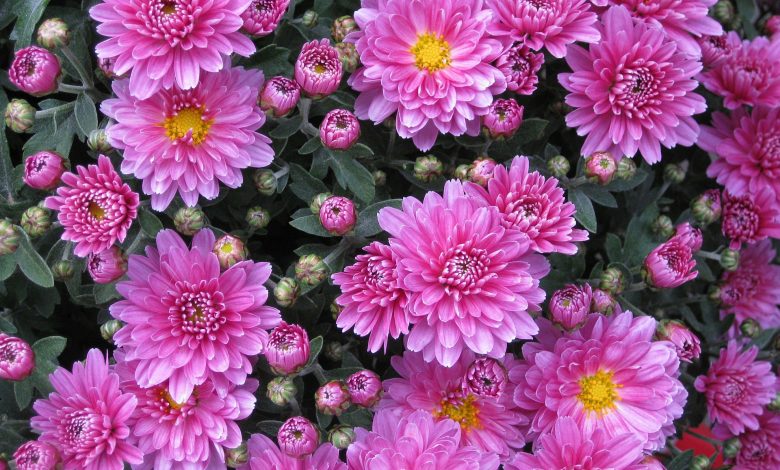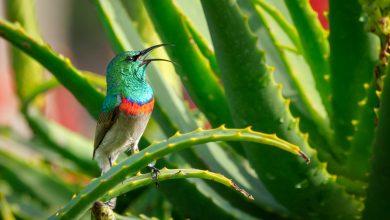Anti Pest Plants to Grow in Your Garden

One of the biggest challenges gardeners face on a day to day basis is that of keeping their gardens safe from nasty insects, pests, and other troublesome creatures. Not only do they have to worry about the likes of flies and mosquitoes, but they need to watch out for slugs, deer, and rabbits too.
It’s not just for the health of their plants either, though. If you have some flowers planted somewhere that people tend to be around, like next to some chairs on a patio, for example, it can be extra important to fend off insects. After all, nobody wants to sit down and relax next to a bee or fly magnet.
Of course, taking precautions to repel creatures that mean your plants harm also has the benefit of keeping your garden neat and tidy, with no chomped-on berries or leaves or dug up dirt.
The issue is that many people fear using an insect repellent, and for good reason. Many insect repellents on the market today are laden with chemicals and substances that are as bad for plants as it is for creepy crawlies.
To combat this, a self-respecting gardener should obtain knowledge related to natural insect repellents. There are a plethora of flowers and herbs that serve to ward off various pests simply by being planted.
Anti Pest Plants

Basil
Basil is what one would call a wonder herb. It is a superb looking plant with nice foliage and tastes incredible in a lot of dishes, including sauces, soups, and salads. It can also improve the taste of certain vegetables that it is planted near, including tomatoes and peppers.
On top of that, it serves as a natural repellent to house flies and mosquitoes, making it a great potted plant to add to an area with seating or that sees high traffic of people.
Lavender
Lavender is very much a love it or hate it type of flower. There are some that adore the scent, lathering their clothes in it and relishing in the purple beauty of the flower. Whereas others can’t stand it, some even being allergic to it. So keep this in mind before you plant some.
It’s this very smell that fends off pests, as insects tend to hate it as much as some humans. Fleas, moths, mosquitoes, and flies are all affected by the scent. You can also use oil extracted from the flower to make a repellent that you can rub on your skin if that’s something that strikes your interest.
Lemongrass
Lemongrass is a great herb. It smells great and tastes even better. You can make teas and hot drinks from it, and it’s even used in a variety of curries. Not only that, but it is actually a natural anti-depressant.
On top of all that, it repels mosquitoes. So if you suffer from a problem with that particular critter, lemongrass is definitely worth your time. Even if you don’t, it’s worth having around just to create a tasty pick-me-up tea.
Mint
A staple of both children’s and adults’ diets all around the world, mint may be the most versatile herb that there is. It can be found in ice cream, chewing gum, certain dishes and desserts, and in cocktails like mojitos. There’s a good reason for this: it smells incredible, and it tastes nearly as good.
This plant is yet another that repels mosquitoes and can be used to create a spray repellent. What makes mint such a prime candidate over its competition, though, is the fact that you can both repel mosquitoes and freshen up the smell of seating areas in your garden with it.
Rosemary
Rosemary is a great companion plant for a wide range of vegetables. It repels a variety of insects that target veggies, and it’s not too obtrusive, so give it some consideration if you have a vegetable patch. It isn’t the most versatile herb, but it does have some culinary applications, if you have the knowledge and the skill.
As with many other repellents, you can turn this herb into a spray if you don’t want to plant it.
Dill
Dill is widely known in the world of the culinary arts and is used in plenty of dishes, both prepared by amateurs and professionals. It also has plenty of healing properties. Interestingly, this point is proven by the fact that ancient Roman gladiators used to eat dill before their fights in order to reinforce their strength.
We won’t be using it for anything as tenacious, but as a repellent, it is great at protecting vegetables. Spider mites, aphids, cabbage loopers, squash bugs, and tomato hornworms are all foiled by this herb, making it a great addition to any and all vegetable gardens.
Sage
Sage is a bit of an outlier on this list. Rather than planting it in the garden to keep your plants safe, sage helps keep you free from pesky insects. More specifically, it makes for a great tool for those of us who like to brave the wilderness and go camping.
Bring a bit of the herb along and toss it into your campfire. The aroma, while not unpleasant to humans, keeps pests well away.

Marigolds
Moving away from herbs now, we move onto marigolds. Marigolds are a gorgeous flower. It has a bronze and golden hue to it, and the flowerheads look beautiful.
It can actually take a year for the marigold’s anti-insect properties to take effect, so be sure that you plant this one in advance. The flower repels mosquitoes and aphids, but more importantly, rabbits. So if you have a bunny problem, marigolds are your solution.
An interesting little fact about this flower is that it releases a chemical known as limonene. This chemical actually slows down flies that are buzzing around the flower. Not particularly helpful, but curious, nonetheless.
Petunias
Petunias are a staple of many cottage gardens and perhaps one of the more well-known flowers out there. It is very easy to grow and comes in a vast array of colors.
As a repellent, petunias get rid of tomato hornworms, aphids, leafhoppers, squash bugs, and asparagus beetles.
Borage
Borage is an interesting looking flower. It isn’t too common, but in small amounts, can find a home in many garden compositions.
The flower repels the tomato hornworm specifically, so its applications are limited. However, it also attracts beneficial insects, like pollinators, so it may be worth your time and attention.
Onions
Funnily enough, onions are also an insect repellent, despite being a vegetable. Now, it should go without saying that onions should have a place in every vegetable garden. They tastes great and can go in so many dishes, but the fact that they are a bug repellent should put them over the edge of anybody apprehensive of these veggies.
They repel carrot rust flies, flea beetles, and aphids. So do yourself a favor, and plant onions in your vegetable garden – if you haven’t done so already.
Alliums
Alliums are a family, as opposed to an individual plant, so there is a lot of variety in appearance for you to choose from. You can get flowers that grow upwards of six feet tall with giant, bulbous flowerheads or strains of the species that are more modest.
As a repellent, the flower family serves vegetable gardens particularly well. Slugs, carrot flies, aphids, and cabbage worms are all fended off by these types of flowers, so if you have veggies suffering from any of these, this is your solution.
The allium family also includes the likes of chives, if you want a repellent that isn’t as obnoxious as the six-foot-tall behemoths mentioned above.
Chrysanthemums
Chrysanthemums are a particularly pretty looking flower. The plant comes in plenty of different hues, but most common are the orange and red shades.
Chrysanthemums are actually a go-to ingredient in a lot of insecticides and insect repellents on the market. This is due to a chemical component of the flower called pyrethrum. The ingredient is so strong that it’s even used in some pet shampoos.
The flower itself serves as a repellent for spider mites, bedbugs, ants, roaches, harlequin bugs, root-knot nematodes, lice, fleas, ticks, silverfish, and Japanese beetles – a pretty exhaustive list.
Nasturtiums
Nasturtiums are one of the most popular companion flowers in use today. Aesthetically, the flower looks quaint yet appealing. It has small flower heads and looks particularly cute in a golden orange hue.
The reason the plant is so popular for companion planting is that it releases a chemical into the air that disperses, allowing it to protect a large patch of plants.
In particular, the flower tends to repel vegetable pests, such as squash bugs, whiteflies, a variety of beetles, cabbage loopers, and aphids. This makes it a great choice of flower for planting around the edges of a vegetable patch.
Geraniums
Geraniums are a genus of flowers that contains over 200 species. Despite this, the flowers all share the same anti-insect properties. Due to the options available to you, chances are, you can find some species of the genus that you like.
The colors that the plants come in vary drastically, as does the size and shape, so shop around to find one you like.
The flowers have a lemony, citrusy scent that helps to repel insects, not the least of which being those pesky mosquitoes.

Floss Flowers
Floss flowers are another ingredient in many popular bug sprays out there.
As a flower, the plant is quaint, staying small with fluffy flower heads. Said flowerheads contain a chemical called coumarin, which is the aforementioned ingredient in bug sprays.
It can be a bit difficult to grow, but the sheer beauty of the flower alone is enough to warrant the effort needed to cultivate it.
Radish
Like onions, radishes are a vegetable that repel insects as well. Although, radishes have distinctly less culinary applications than onions are definitely a less popular ingredient, so only plant these if you are actually going to eat them.
On top of the vegetable’s limited kitchen uses, it only repels cucumber beetles, so you should only be using it as a companion to cucumbers to prevent pests.
Bayleaf
Bayleaf is quite an interesting addition to this list. It was used as a sacred plant by the Greeks and Romans. It smells incredibly strongly and, when used correctly, has a ton of healing and medicinal properties. Specifically, it is used in a variety of stomach, kidney, and liver remedies.
The leaves also have uses in the kitchen, often being thrown into soups and stews to spice the flavor up a bit, and as a repellent, it works against flies.
So if you have a few of these leaves planted around strategic points in your home, you don’t ever have to worry about flies again.
Common Mugwort
Mugwort is a perennial grass plant. It has a strong aroma to it and a bitter, yet not entirely unpleasant, taste. It can be used greatly to repel mosquitoes, flies, moths, and even mice.
Fennel
Fennel has quite a celebrated history. In ancient Greece, it was used to honor the gods. Priestesses would plant it in a god’s shine garden, and people would wear wreaths made out of its beautiful white flowers. The plant was also used medicinally, believed to improve eyesight, and served as a remedy for a variety of digestive issues.
The flower emits a strong smell, which is what it can attribute its repellent properties to. Slugs, snails, and aphids, in particular, hate the scent.
Catmints
Catmint, also known as nepeta, is a milder version of the catnip plant. As the name implies, the plant also attracts cats in droves, so bear that in mind when you go to plant this one.
The plant contains an ingredient called nepetalactone, which is the primary reason it is such a good repellent. In fact, research suggests that the chemical is ten times stronger than the leading ingredients in many commercial-grade bug sprays.
The plant also attracts bees and pollinators, making it an all-round great addition to a garden, so long as you don’t mind kittens and cats making their way to it.

That list is fairly comprehensive, so hopefully, you have found something on it that has struck your fancy. It doesn’t matter if you’re growing vegetables, fruits, flowers, herbs, or whatever, there are always creepy crawlies out there waiting to chow down on your garden, so make sure you are taking the necessary steps to protect your plants.
Gardening can be a lot of hard work, so you don’t want that time and effort to be ruined by some fat slugs with an appetite, so do yourself a favor and take preventive measures, instead of waiting for an infestation before doing anything about it.



